Axes are a tool which give out a very manly, primitive-like vibe and are considered great survival instruments. However, there has been a long standing dispute whether machetes or axes are better for survival purposes. As such, machetes work better in jungles when it comes to cutting vines and lianas, being pretty lightweight and flexible as well. However, the different types of axes we’ll talk about below can have more purposes and can be used for cutting through thicker material and hardwood.
[the_ad_placement id=”in-text-1-type-r”]You can’t fell down a tree with a machete, but you sure can with the right axe.
Axe models according to their head shape
Axes are different from each other, and one of the most important characteristics that differentiate them is the shape of their head.
The cutting axe
The cutting axe has a very thin profile, which is the best when it comes to serving its purpose. The thin blade has the ability to imprint the biggest force, and then cut through wood proficiently. This cutting axe can be used for all sorts of purposes that make it useful to protrude into the wood without much friction.
Consider this sort of axe for things like cutting logs for fire or for building a log cabin. It can even be used to fell entire trees.
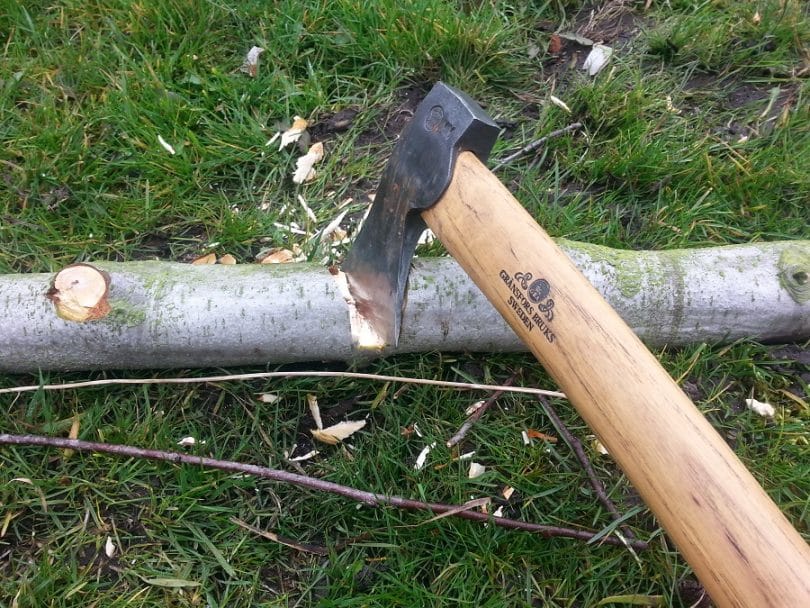
The cutting axe is also known as the felling axe, and its characteristics can be summarized as follows:
- Sharp blade.
- Thin bit.
- Tapered head.
- Medium weight heads of about 3 pounds.
- Medium length handle of approximately 32 inches.
- Swings easily.
- Pretty flexible.
It’s great for:
- Cutting across wood grain.
- Cutting deeply.
- Cutting down stumps.
- Cutting branches off the trees.
- Cutting even the toughest barks.
All these characteristics are specific to all sorts of felling axes, but there are also different models which can be included in this category, each with its own style or design, like the most appreciated Michigan axe or Dayton axe.
The splitting axe
The splitting axe has a wider profile, which makes it more difficult to use as a cutting instrument. Because it’s so wide, it couldn’t possibly imprint a lot of force to cut deeply into a log for instance. On the other hand its blade is perfect for splitting into wood, because it won’t cut across wood grain, but split its fibers.
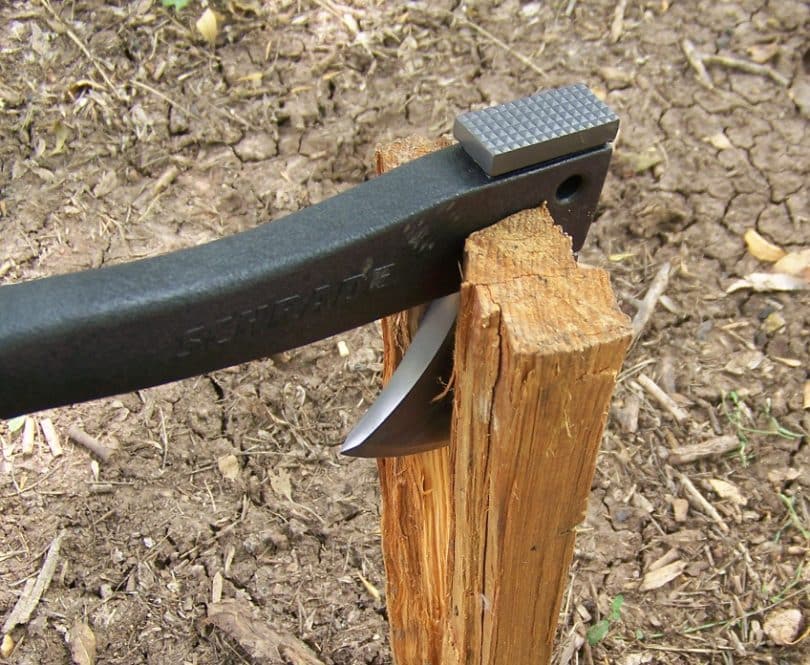
If you don’t have a cutting axe handy, you can try using a splitting axe for cutting purposes but you will have a more difficult time doing this, as each cut will be pretty shallow. You can basically say you’ll have your work cut out for you.
The main characteristics of a splitting axe (which is also known as a splitting maul) are:
- Heavier head of approximately 7 pounds.
- Head shaped like a wedge.
- Straight handle.
- Broad butt.
- Requires a proficient user, not a beginner.
- More difficult to handle.
Given the above listed features, the splitting maul will:
- Cleave the logs along their fibers, vertically.
- Allow for a stronger strike.
- Prevent the axe from getting stuck.
- Be able to push its way constantly deeper after the first strike.
- Function as a hammer for another stuck maul because of their broad butt.
The shaping axe
The previous two axe models have a well marked blade curve, which doesn’t allow them to touch the wood in more than just a very small surface. Whether cutting the wood horizontally, or splitting it vertically, the purpose of the above models is to penetrate the wood.
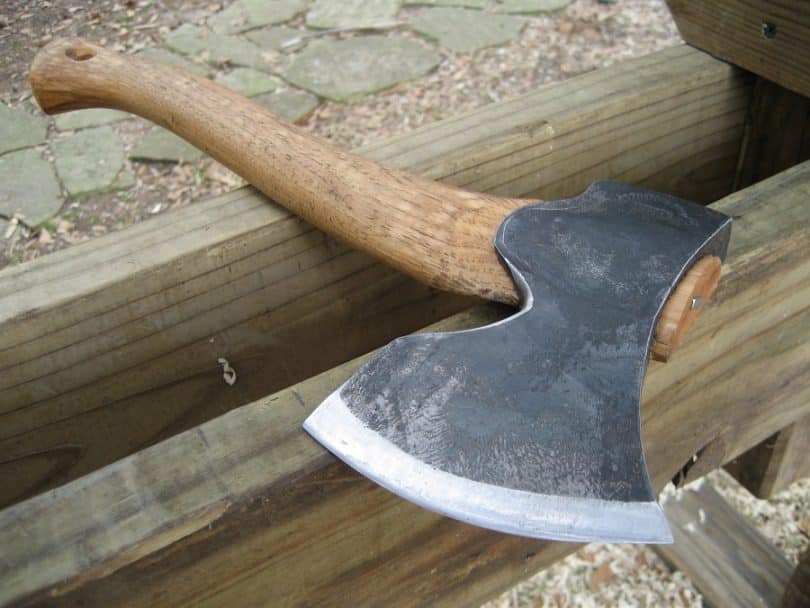
On the other hand, a shaping axe doesn’t have a well marked blade curve, but a flat one. Instead of making the cut deep, the flat bit curve makes it quite even. Take the example of the broad axe which is perfect for chopping an even section of a log, provided you place it flat on the wood you want to shape and slide it across carefully.
The shaping axe is great for making the finishing touches, but it’s not as multi-functional as the felling or the splitting axe.
Other characteristics specific to shaping axes are:
- Large bits.
- Long beards.
- The bits can be beveled on both sides or just on one.
As such, these axes can:
- Hew logs and make beams.
- Make chisel cuts if they have just one side beveled.
- Make scalloped cuts if they have both sides beveled.
- Make fine, precise cuts.
- Be used just with one hand, depending on their beveled side.
Axe models according to their head type
Depending on how many blades they have – one or two – axes will be further differentiated into different categories.
[the_ad_placement id=”in-text-2-type-r”]It’s important to note that the above axe models depending on their head shape can also have one or two blades. For example, a splitting axe is also a single bladed axe. However, a double bladed axe oftentimes has different head shapes, so it can be used both for cutting or splitting.
The single bladed axe
This is the most usual type of axe, and the way its head is shaped makes it very easy to use the centripetal force once you have swung it across your shoulder. You will therefore imprint more force into the cut.
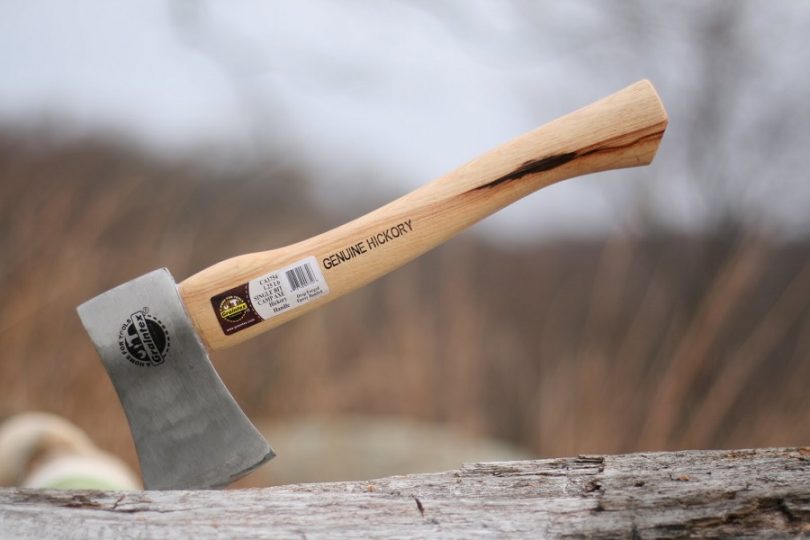
The characteristics of this axe are:
- It only has one bit.
- Hardened poll.
- Can have wedges made from hard wood.
These features make it perfect for:
- Imprinting more force into the cut.
- Hammering, if it has a hardened poll.
- Splitting wood, if it has wedges made from hard wood.
The double bladed axe
Having two bits makes it symmetric and easier to balance than the previous model discussed. It’s also multi-functional, considering the fact that its two blades can meet different purposes, one for cutting and the other one for splitting.

The characteristics of this axe are pretty obvious, and there’s not much else to discuss here. However, an interesting detail is that when this type of head is attached to a hatchet, it’s called the Nessmuk grind, being the namesake of the author Nessmuk.
Axe models according to their haft length
The haft is an important part of the axe too, and you can split the axes into categories depending on how long or short their hafts are.
The pocket size
This is the smallest type of axe, even smaller than a hatchet, seeing that its haft is only about 12 inches long, and the common weight is about 1 pound. However, they are quite sturdy and strong for their size, seeing that they can be used to split logs about 6 inches wide.
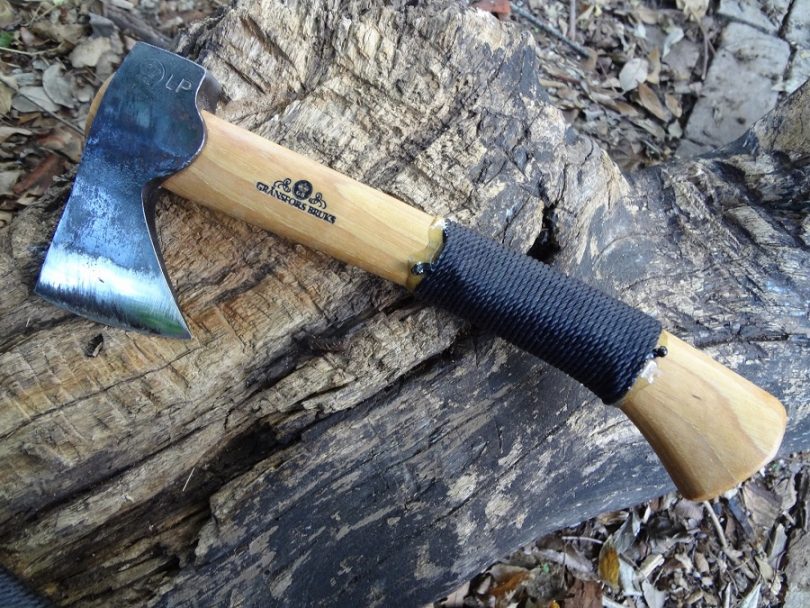
If you’re out camping and need a good axe for cutting firewood, while also enjoying the benefits of its portability, then the pocket axe is the right model.
The hatchet
This is a larger type of axe, the haft reaching a length of approximately 18 inches, which makes the axe weigh a total of 1.5 pounds. It can be used great with one hand, and it’s quite multi-functional. As such, a hatchet can be used either for cutting or for splitting, depending on the model of your choice from this category.
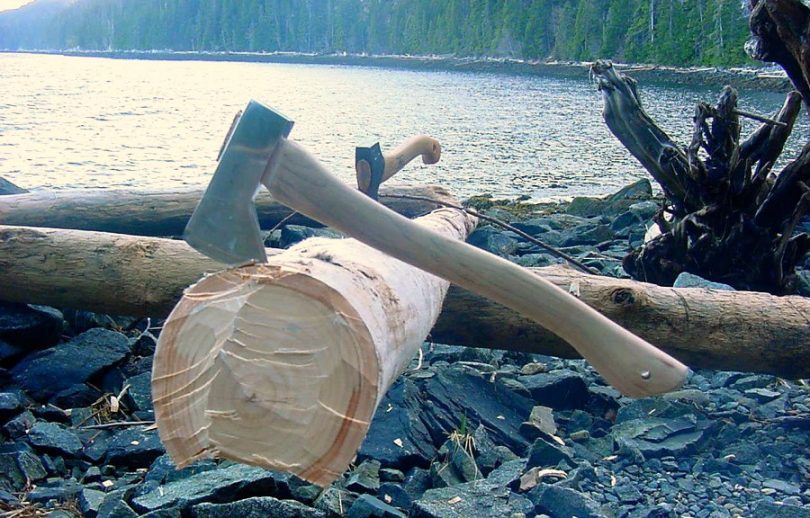
For example, if you’re more interesting in a splitting hatchet, you can choose the Roselli model. See our list of the best tactical hatchet to give you more options and choices.
The limbing axe
At 24 inches long and 2 pounds heavy, this axe is considered a medium sized model. As its name suggests, it’s specifically made for cutting down limbs from the trees. Anyone who has tried to do that – whether we’re talking about a tree that’s fallen down or one that’s standing upright – knows the difficulties posed, like lack of space and an increased need for dexterity.
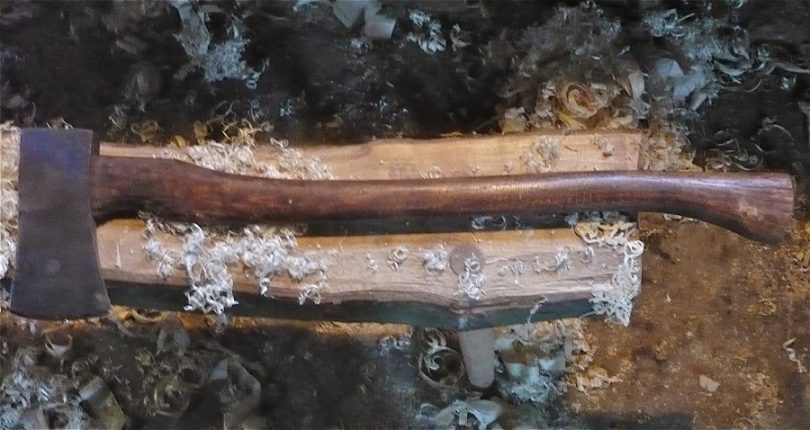
The limbing axe can solve these problems, seeing as it’s not too heavy, so if there’s little space available, you can use just one hand to handle it. However, if you have enough space so that you can freely focus on added precision, the haft is long enough to grasp it with both hands.
The felling axe
A medium to full sized axe, the felling axe is generally 32 inches long, with a total weight of 3 pounds.
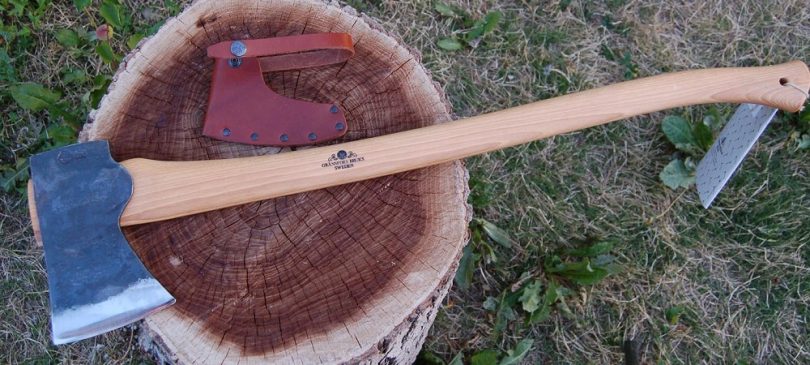
It can have a double bladed head, and that’s a great asset when it comes to its versatility. You can use a feeling axe to cut through logs, or even cut tree limbs.
The maul
The biggest axe you can find, a maul reaches up to 40 inches in length and 7 pounds in weight, being used for splitting thanks to its immense sledge hammer. You can even add some wedges and wood grenades to improve the splitting, but because of its length and weight you have to be very careful when handling it.
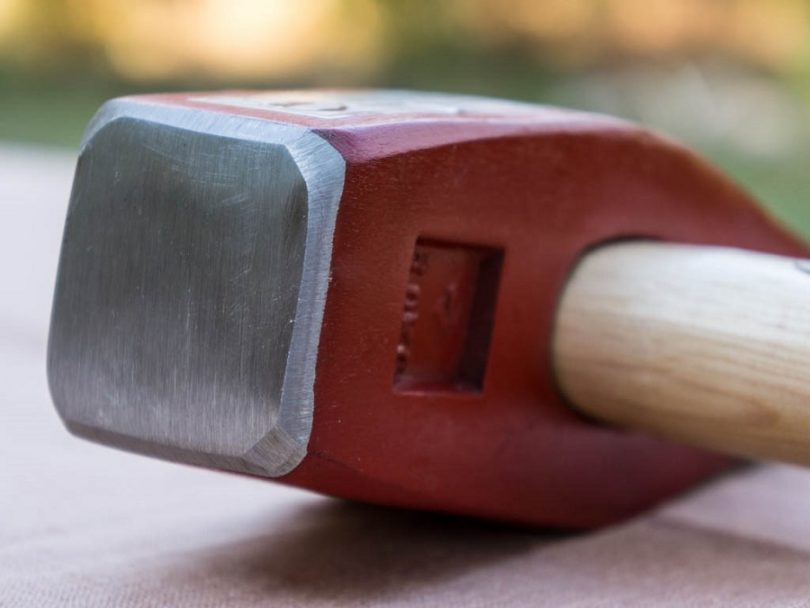
This is not an axe for beginners or for camping purposes, and it can only be used with two hands. See our article review of the best wood splitting maul for more information.
Axe models according to their haft materials
Apart from the length and weight of the axe, the material from which the haft is made is likewise important.
Here are the pros and cons for each type of material most commonly used for hafts:
Wood
Pros:
- Sturdy.
- Lightweight.
- Absorbs shock.
- Easy replaceable haft.
Cons:
- Easy to break or damage.
Glass reinforced plastic
Pros:
- Sturdier than wood.
- Pretty lightweight.
Cons:
- Damaged by chemicals.
- Has to be protected better.
- Hard to replace haft.
Metal
Pros:
- Solid.
- Hard to damage.
Cons:
- Extremely heavy.
- Hard to replace haft.
How do you choose the axe you need?
When choosing an axe, there are all sorts of things to take into account, including the models we’ve discussed above. As you can easily notice, each model is better for one particular purpose as well as for different body types or body strengths. The other characteristics you need to consider when choosing a good axe are:
Size
If you need a smaller axe like a pocket sized axe for camping purposes, then your choice is simple. However, if you need a bigger axe like a felling axe or a maul, you may not be able to handle it unless its size fits your body type. To make sure that’s the case, grab the axe by the head and see if the end of the haft fits comfortably inside your armpit.
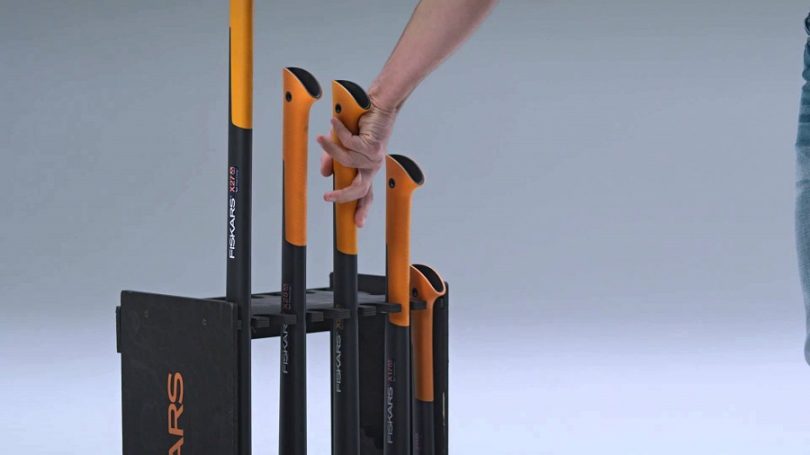
If the haft is longer and doesn’t fit well, then the axe is too big for you.
Head alignment
The head of the axe has to be aligned perfectly with the haft, or otherwise it won’t cut as well. To make sure of this, grab the axe’s head in your hand and put the haft near your eyes to see if the alignment is suitable.
Balance
Check to see if the axe balances well on your palm, after you have carefully placed its head between your forefinger and thumb.
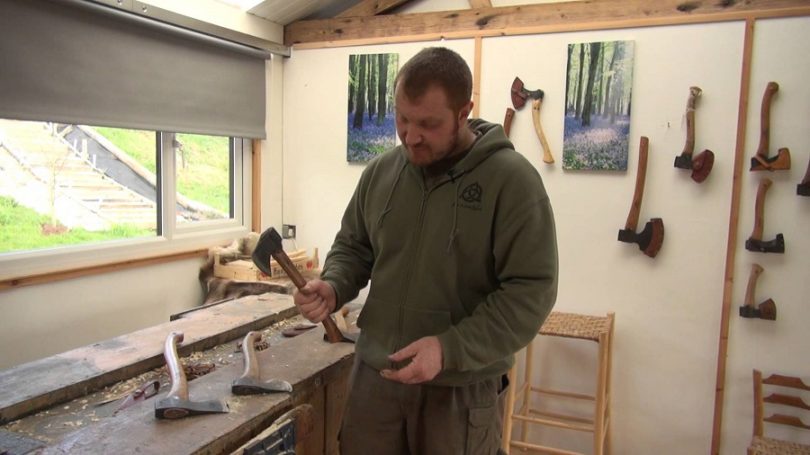
The haft should be pretty straight too in this position, in order for the axe to be easily handled.
Purpose
If you’re going camping or trekking and need an axe for chopping firewood or skinning critters, then a pocket-sized axe is the right model for you because of its lighter weight and portability.
- A hatchet is better for survival purposes and fishing expeditions because it’s stronger and more resistant, while still being pretty lightweight.
- A limbing axe is more appropriate for cutting branches to make a clear path or even for felling smaller trees, so it’s better for harsher survival conditions. It can even be used as a self-defense weapon against wild animals’ attacks.
- Felling axes and mauls are good if you’re taking a longer outdoor trip and need to cut down logs or trees and gather enough firewood for the whole winter.
That being said consider that when buying an axe you have to choose a high-quality item that doesn’t break or damage too easily, especially if you’re planning to use it for felling or mauling.
[the_ad_placement id=”in-text-3-type-r”]Just to be on the safe side, it also doesn’t hurt to have more than one axe with you, for example a pocket sized and a felling one, as well as a machete if you have the room.
Check out our list of the best survival axe for your needs – it’s a must-read.



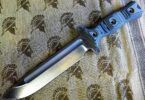


I think I use my axe the most while out camping. It is great for cutting wood, making small improvised items among other things. However, I have a hard time sharpening it with a stone. It just takes too long. Any alternative methods out there?
Apart from using a stone, you can sharpen your axe with: a bench grinder, an angle grinder, a belt sander, sandpaper, a dremel, a puck, and shia labeouf.
Axes are crucial, I always carry them and use them a lot. Whether it is splitting wood or just improvising a piece of equipment from wood, gotta have a good axe. I would recommend ones with a wooden handle for camping, and make sure they are light enough if you hike a lot.
Thank you Cassie for sharing your opinion with us.
Once, I was making a blueprint using the original artwork, but due to some working issues, I stopped working on it. My Father is a blacksmith, so it’s in my blood. The mechanics behind this is very simple. The trick is that the hilt does not spin. Actually, the Darven spins the axes with hands and wrists. The only mechanical part here is the opening and closing the lock of the additional blade. For comfort and better use, the wooden handle would be a perfect option to choose.
Thank you, Jackie, for sharing your opinion with us.
I have a Fiskars felling axe that has been serving me for almost a year. Its greatest quality is that it is not heavy as hell (like most of the axes) and still bangs the wood better than most. A good axe must have two qualities: cutting and splitting. This one has both of them. I would always recommend Fiskars felling axe.
We appreciate your opinion, thank you.